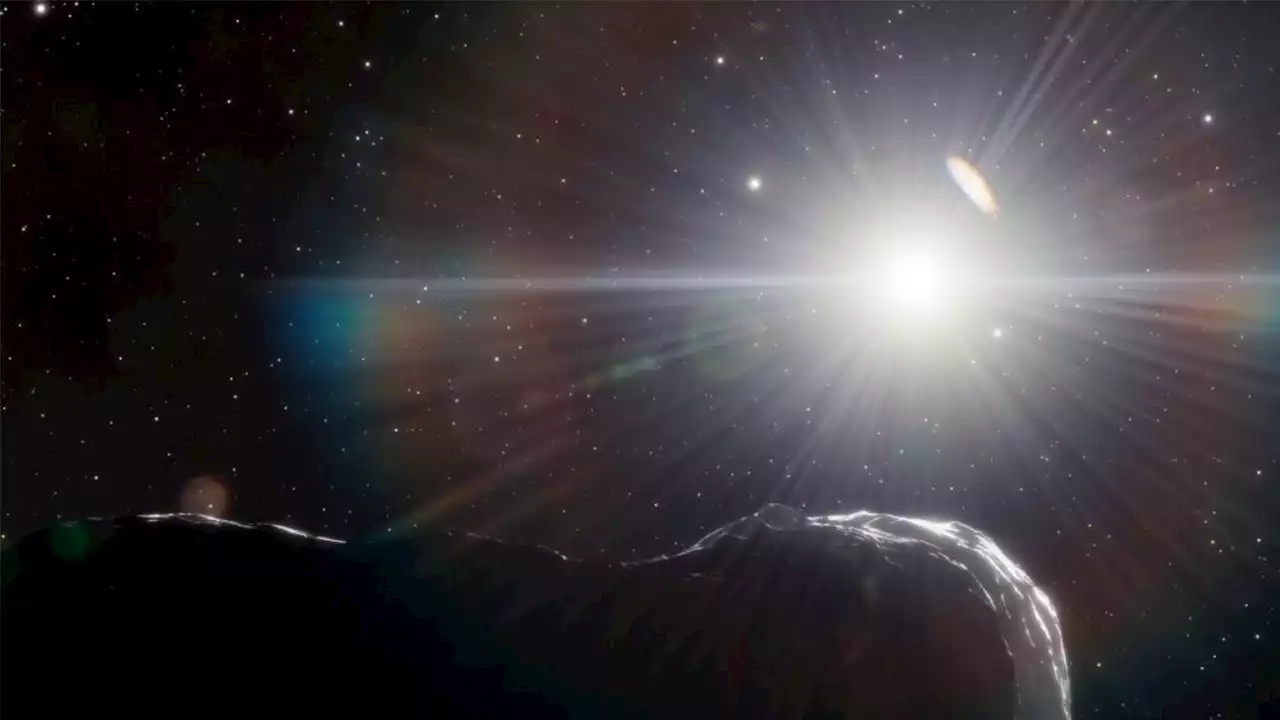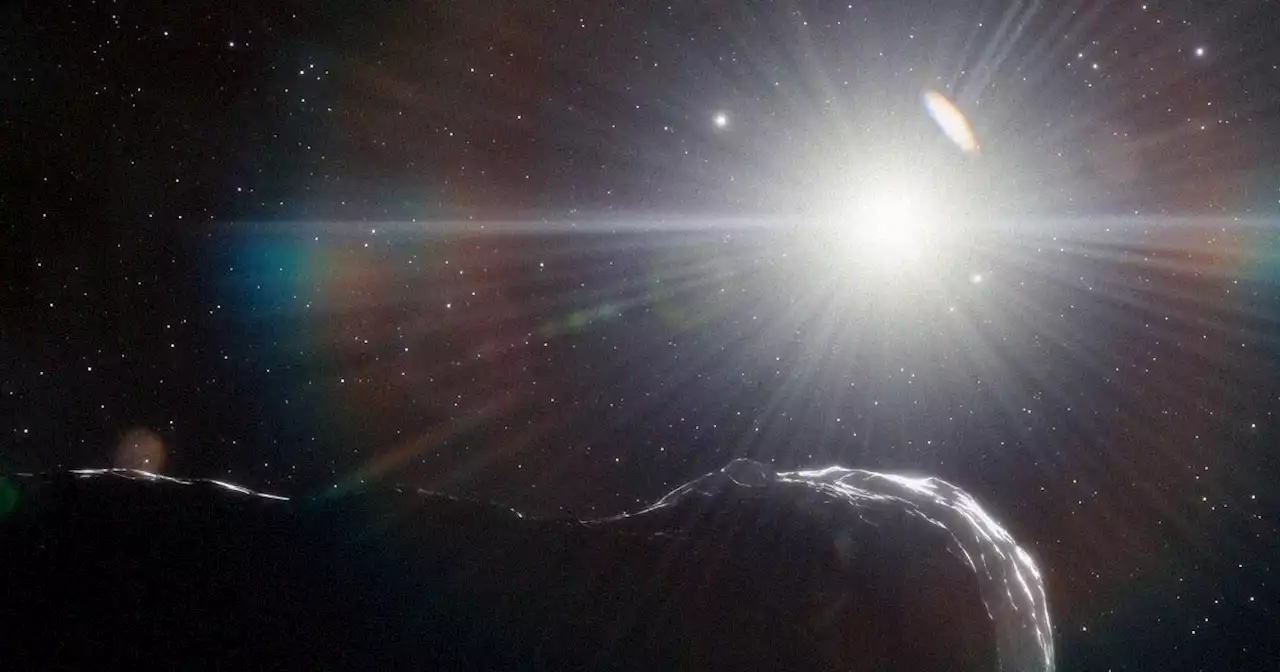Scientists say the Jupiter-sized exoplanet appears to float as if it were in a giant cosmic bathtub.
Astronomers say they've discovered a strange exoplanet with a marshmallow-like density that appears to float in space as if it's in a cosmic bathtub.
Experts used the WIYN 3.5-meter Telescope at the observatory to find the Jupiter-sized planet which is located in the constellation of Auriga the Charioteer about 580 light-years away from Earth. Shubham Kanodia, a researcher at Carnegie Institution for Science’s Earth and Planets Laboratory said, “Giant planets around red dwarf stars have traditionally been thought to be hard to form.”
“So far this has only been looked at with small samples from Doppler surveys, which typically have found giant planets further away from these red dwarf stars. Until now we have not had a large enough sample of planets to find close-in gas planets in a robust manner,” Kanodia said.
Malaysia Latest News, Malaysia Headlines
Similar News:You can also read news stories similar to this one that we have collected from other news sources.
 Astronomers discover ‘planet killer’ asteroid that may one day hit EarthHidden within the sun's glare, astronomers have recently discovered a potentially planet-killing asteroid that could one day impact the Earth.
Astronomers discover ‘planet killer’ asteroid that may one day hit EarthHidden within the sun's glare, astronomers have recently discovered a potentially planet-killing asteroid that could one day impact the Earth.
Read more »
 A hidden planet-killer asteroid could pose a threat to Earth in the futureAstronomers discovered a hidden planet-killer asteroid that could cross Earth's path in the future, but they aren't sure when.
A hidden planet-killer asteroid could pose a threat to Earth in the futureAstronomers discovered a hidden planet-killer asteroid that could cross Earth's path in the future, but they aren't sure when.
Read more »
 Astronomers just detected a potentially hazardous 0.9-mile-wide asteroid hiding in the Sun's glareUsing a Dark Energy Camera on the Blanco 4 m telescope in Chile, astronomers have detected an asteroid dubbed as a planet killer.
Astronomers just detected a potentially hazardous 0.9-mile-wide asteroid hiding in the Sun's glareUsing a Dark Energy Camera on the Blanco 4 m telescope in Chile, astronomers have detected an asteroid dubbed as a planet killer.
Read more »
 Astronomers Detect 'Planet Killer' Asteroid That Poses Small But Real Risk to EarthResearchers have detected the largest potentially hazardous asteroid in 8 years, a one-mile-wide space rock that could end life as we know it.
Astronomers Detect 'Planet Killer' Asteroid That Poses Small But Real Risk to EarthResearchers have detected the largest potentially hazardous asteroid in 8 years, a one-mile-wide space rock that could end life as we know it.
Read more »
 L 363-38 b: a planet newly discovered with ESPRESSO orbiting a nearby M dwarf starContext. Planets around stars in the solar neighbourhood will be prime targets for characterisation with upcoming large space- and ground-based facilities. Since large-scale exoplanet searches will not be feasible with such telescopes, it is crucial to use currently available data and instruments to find possible target planets before next generation facilities come online. Aims. We aim at detecting new extrasolar planets around stars in the solar neighbourhood by blind radial velocity (RV) search with ESPRESSO. Our target sample consist of nearby stars (d | 11 pc) with little (| 10) or no previous RV measurements. Methods. We use 31 radial velocity measurements obtained with ESPRESSO at the VLT between December 2020 and February 2022 of the nearby M dwarf star (M_star =0.21 M_sun, d=10.23 pc) L 363-38 to derive the orbital parameters of the newly discovered planet. In addition, we use TESS photometry and archival VLT/NaCo high contrast imaging data to put further constraints on the orbit inclination and the possible planetary system architecture around L 363-38. Results. We present the detection of a new extrasolar planet orbiting the nearby M dwarf star L 363-38. L 363-38 b is a planet with minimum mass mp sin(i)=4.67+/-0.43 M_Earth orbiting its star with a period P=8.781+/-0.007 d, corresponding to a semi-major axis a=0.048+/-0.006 AU, which is well inside the inner edge of the habitable zone. We further estimate a minimum radius rp sin(i)=1.55 - 2.75 R_Earth and an equilibrium temperature Teq= 330K.
L 363-38 b: a planet newly discovered with ESPRESSO orbiting a nearby M dwarf starContext. Planets around stars in the solar neighbourhood will be prime targets for characterisation with upcoming large space- and ground-based facilities. Since large-scale exoplanet searches will not be feasible with such telescopes, it is crucial to use currently available data and instruments to find possible target planets before next generation facilities come online. Aims. We aim at detecting new extrasolar planets around stars in the solar neighbourhood by blind radial velocity (RV) search with ESPRESSO. Our target sample consist of nearby stars (d | 11 pc) with little (| 10) or no previous RV measurements. Methods. We use 31 radial velocity measurements obtained with ESPRESSO at the VLT between December 2020 and February 2022 of the nearby M dwarf star (M_star =0.21 M_sun, d=10.23 pc) L 363-38 to derive the orbital parameters of the newly discovered planet. In addition, we use TESS photometry and archival VLT/NaCo high contrast imaging data to put further constraints on the orbit inclination and the possible planetary system architecture around L 363-38. Results. We present the detection of a new extrasolar planet orbiting the nearby M dwarf star L 363-38. L 363-38 b is a planet with minimum mass mp sin(i)=4.67+/-0.43 M_Earth orbiting its star with a period P=8.781+/-0.007 d, corresponding to a semi-major axis a=0.048+/-0.006 AU, which is well inside the inner edge of the habitable zone. We further estimate a minimum radius rp sin(i)=1.55 - 2.75 R_Earth and an equilibrium temperature Teq= 330K.
Read more »
